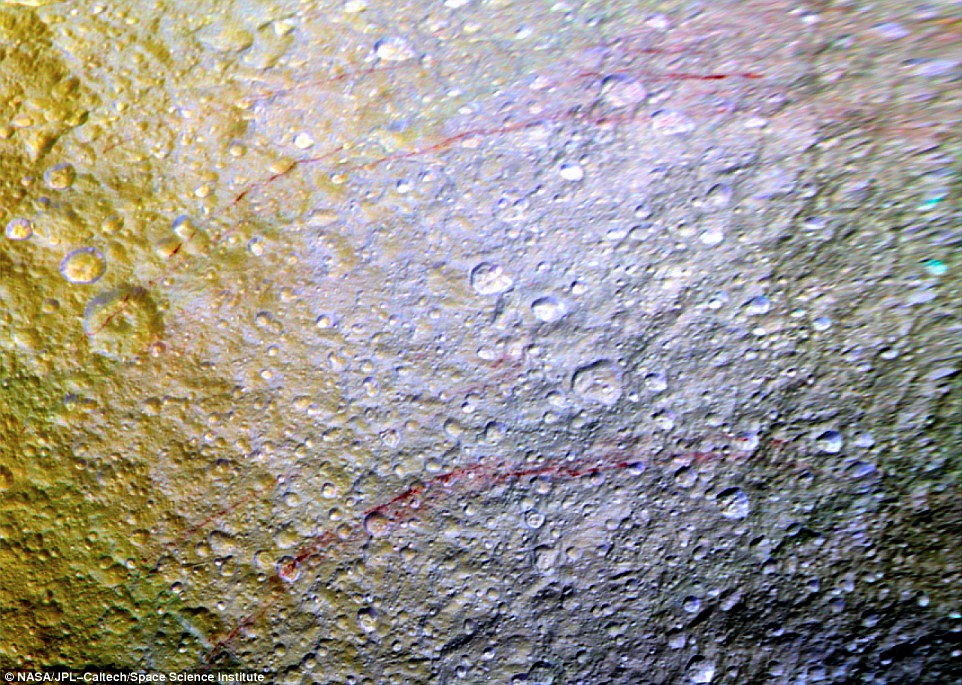-
Tips for becoming a good boxer - November 6, 2020
-
7 expert tips for making your hens night a memorable one - November 6, 2020
-
5 reasons to host your Christmas party on a cruise boat - November 6, 2020
-
What to do when you’re charged with a crime - November 6, 2020
-
Should you get one or multiple dogs? Here’s all you need to know - November 3, 2020
-
A Guide: How to Build Your Very Own Magic Mirror - February 14, 2019
-
Our Top Inspirational Baseball Stars - November 24, 2018
-
Five Tech Tools That Will Help You Turn Your Blog into a Business - November 24, 2018
-
How to Indulge on Vacation without Expanding Your Waist - November 9, 2018
-
5 Strategies for Businesses to Appeal to Today’s Increasingly Mobile-Crazed Customers - November 9, 2018
Mysterious, Graffiti-like Red Streaks Spotted on Saturns Battered Moon, Tethys
It looks as if a graffiti artist spray painted on them. “Here, the giant impact basin Odysseus on Saturn’s moon Tethys stands out brightly from the rest of the illuminated icy crescent”, NASA commented in a recent statement.
Advertisement
NASA’s Jet Propulsion Laboratory (JPL), also responsible for designing the 6.8 meter-tall (22.3ft) spacecraft and its onboard gear, writes on its website that the photos were taken “using clear, green, infrared, and ultraviolet special filters… combined to create enhanced-color views” which underline the striking features that, otherwise would not have been visible to the naked eye.
A few of the red arcs can actually be seen faintly in observations that were made earlier in the Cassini mission. Elsewhere in the solar system, red shows up on the surfaces of Jupiter’s moon Europa (perhaps as a result of the mixture of salts and sulfur compounds), and was spotted at the north pole of Pluto’s moon, Charon (possibly due to some of Pluto’s methane and nitrogen atmosphere being deposited there).
“It’s surprising how extensive these features are,” Cassini scientist Paul Schenk of Houston’s Lunar and Planetary Institute says of the red smears on Tethys’s surface.
Several of the arc-shaped scars had been observed previously, but the latest images are the first to show them clearly and in colour. This has revealed a yellowish cast to portions of the moon, which transitions to almost pure white in other regions.
“The red arcs must be geologically young because they cut across older features like impact craters, but we don’t know their age in years”, said Paul Helfenstein, a Cassini imaging scientist, in a news release.
The origin of the features and their reddish color is a mystery to Cassini scientists. Scientists and researchers alike have only opined an educated guess that may-haps the red arcs have been caused by ice on Tethys’ surface having been exposed to chemical impurities.
Except for a few small craters on Saturn’s moon Dione, reddish-tinted features are rare on other moons of Saturn.
Cassini will continue circling Saturn and studying the gas giant and its many moons until September 2017. “If the stain is only a thin, colored veneer on the icy soil, exposure to the space environment at Tethys’ surface might erase them on relatively short time scales”, he added.
Advertisement
The next step is following up the observations of the features, at higher resolution, later this year.




























